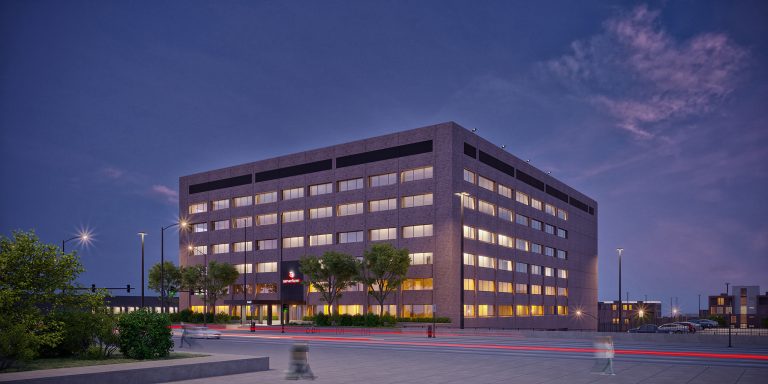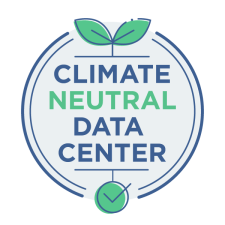What is a green data center and how do we achieve one? Here are some of the steps data centers can take now to become green.
5 Steps for a green data Center
Step 1: Do a PPA, whether virtual or physical
Step 2: Build a microgrid with a combination of renewable power sources feeding storage devices
Step 3: Eliminate diesel generators – this may not have a major impact on carbon, but it will target emissions
Step 4: Develop designs that eliminate the use of water
Step 5: Implement a well-established and accepted accounting method that would signify carbon reductions are real
Step 1: Do a PPA, whether virtual or physical
![]() A Power Purchase Agreement (PPA) is often a long-term contract when a business agrees to purchase electricity directly from a renewable energy provider or producer. Negotiations on the amount of electricity supply, price and accounting and certificates of origin are likely.
A Power Purchase Agreement (PPA) is often a long-term contract when a business agrees to purchase electricity directly from a renewable energy provider or producer. Negotiations on the amount of electricity supply, price and accounting and certificates of origin are likely.
PPAs benefit clients through a local approach as authentic proof of their renewable energy consumption. PPAs are popular in North America and Scandinavia and are expanding globally across Europe, Australia, and Asia.
Big tech companies with hyperscale data centers are the biggest investors in PPAs. The best PPAs involve direct physical connections between the renewable energy source and the green data center. For this, the data center is physically located close to solar or wind energy generation infrastructure so that all the energy generated goes into a grid that feeds that green data center.
Different types of PPAs:
Physical: These are on-site PPAs that supply direct electricity to a physical facility by the project planner installing a photovoltaic system on site and sells the produced electricity to a company.
Virtual: Enables flexibility in contractual arrangements in the form of Synthetic Power Purchase Agreements (SPPAs). The producers and clients agree on a price per kilowatt-hour with the electricity indirectly supplied from the energy source. Instead, the energy service provider takes the produced electricity and trades it when required.
Both types of PPA are closer to a real carbon reduction measure than offsetting. However, even with a physical connection, generating your own green power and feeding data centers directly is easier said than done.
Step 2: Build a microgrid with a combination of renewable power sources feeding storage devices
![]() Though a nascent market in many ways, Microgrids could have a major impact on greening the data center market. Microgrids come in many shapes, forms and size but are effectively local grids which operate independently from the main electricity grid. These systems often generate power through renewable energy sources such as wind and solar and are combined with battery storage.
Though a nascent market in many ways, Microgrids could have a major impact on greening the data center market. Microgrids come in many shapes, forms and size but are effectively local grids which operate independently from the main electricity grid. These systems often generate power through renewable energy sources such as wind and solar and are combined with battery storage.
The main advantage is on-site power generation connects the microgrids with deployed renewable or low-carbon resources that include solar panels, small wind turbines, geothermal power and combined heat and power (CHP).
Microgrids operate in different modes. Island mode means running independently of large traditional power industry Transmission System Operator grids. Integrated Microgrids are connected to the main grid
There exist many definitions for Microgrids.
An appropriate one for the data center sector is as follows:
“A microgrid is a closed system of interconnected energy loads and distributed energy resources within a defined boundary and with a single point of coupling to the wider grid and can work disconnected from it. The fact that these systems are made to assure resilience and can work off grid make them appear as single loads that can be regulated by the grid operator according to their needs.”
Source:
delta-ee.com/…/will-microgrids-become-increasingly-important-in-the-european-energy-sector
Step 3: Eliminate diesel generators – this may not have a major impact on carbon, but it will target emissions
![]() Data centers must ensure that their mission critical equipment remains online to protect client and infrastructure assets. New mandates sanctioned by governments and society intend to ensure data centers comply with net zero targets and drive towards greater sustainability. Digitalization is escalating in all industries, and as a result this will increase the demand for storage space. This can lead to conflict with sustainability targets.
Data centers must ensure that their mission critical equipment remains online to protect client and infrastructure assets. New mandates sanctioned by governments and society intend to ensure data centers comply with net zero targets and drive towards greater sustainability. Digitalization is escalating in all industries, and as a result this will increase the demand for storage space. This can lead to conflict with sustainability targets.
Diesel generators emit carbon dioxide and excessive particulate emissions both of which are harmful to the environment. Gen sets are operated under strict regulation and operational restrictions.
The generators are expensive to purchase and maintain as fuel management testing creates operational problems as the products are activated in times of emergency.
Options to replace diesel with biofuels include Hydronated Vegetable Oil (HVO) that is produced from food waste and non-food grade vegetable oil. This results in carbon emission being reduced by 90% without modifications.
Diesel gen set manufacturers are pushing the message that their machines will be easily modified to run on Liquid Natural Gas (LNG), still a fossil fuel but with lower emissions than diesel. Future plans are for LNG Hydrogen fuel blends to be used before eventually evolving into running on green hydrogen which will provide a zero-emission solution. The journey from diesel to hydrogen is long term with many technical and fuel transmission and storage challenges to be addressed.
Source:
https://datacentrereview.com/2022/08/evolving-sustainable-gensets/
https://datacentremagazine.com/critical-environments/clean-energy-backup-data-centres-ditch-diesel-generators
https://journal.uptimeinstitute.com/data-centers-without-generators-the-groundwork-is-being-laid/
Step 4: Develop designs that eliminate the use of water
![]() Data center cooling operations have used water for decades. In traditional evaporative cooling and other high water use systems a 40MW data center could use 500 million gallons of water each year.
Data center cooling operations have used water for decades. In traditional evaporative cooling and other high water use systems a 40MW data center could use 500 million gallons of water each year.
Facilities can use three diverse types of water: potable (drinking), rain and waste. Potable water is regarded as the most expensive to use in a data center as it is primarily for public consumption. Rainwater can be collected directly on a data center’s roof then purified as a coolant. Wastewater can be recycled and used by a data center where a wastewater treatment plant is located near the facility area.
The recent droughts across the US, Australia, Europe and elsewhere across the world have led to water restrictions. This will concern data center operators if these droughts continue or become more frequent.
Jochem Steman, VP Serverfarm Europe, said “Serverfarm doesn’t waste water in its data centers in London and Amsterdam. Using economizers and chillers the water is constrained in loop system. Water usage, and the WUE (Water Usage Effectiveness) metric is becoming more important to operators as customers want to see measurable reductions or eradication. In the last 10 years Serverfarm has only deployed air-cooled chillers or hybrid economizer air handling units.”
Step 5: Implement a well-established and accepted accounting method that would signify carbon reductions are real
![]() Investments into renewable energy sources are escalating with investors entering the space as carbon reductions are mandatory for all industry sectors. Instruments such as REC (renewable energy credit) censors every megawatt hour of electricity that is generated from a renewable energy resource. This ensures that the electricity produced is green and does not produce GHG (greenhouse gas).
Investments into renewable energy sources are escalating with investors entering the space as carbon reductions are mandatory for all industry sectors. Instruments such as REC (renewable energy credit) censors every megawatt hour of electricity that is generated from a renewable energy resource. This ensures that the electricity produced is green and does not produce GHG (greenhouse gas).
In line with other sectors, data center companies must audit and account for their own carbon reduction and eradication methods.
This may range from investing in renewable energy projects where the considerations will include the investment structure, issuing entity or an alternative accounting method such as equity method, fair value, and measurement alternatives.
The EU’s Corporate Sustainability Reporting Directive (CSRD) will be adopted by the EU (European Union) in October 2022. This sustainability reporting mandate is a prerogative for companies to report their impact on the environment with major reporting requirements that have implications for energy intensive sectors such as data centers.
Green Commitment
Serverfarm is fully committed to sustainable data center operations. Serverfarm is a signatory and member of the Climate Neutral Data Pact.






